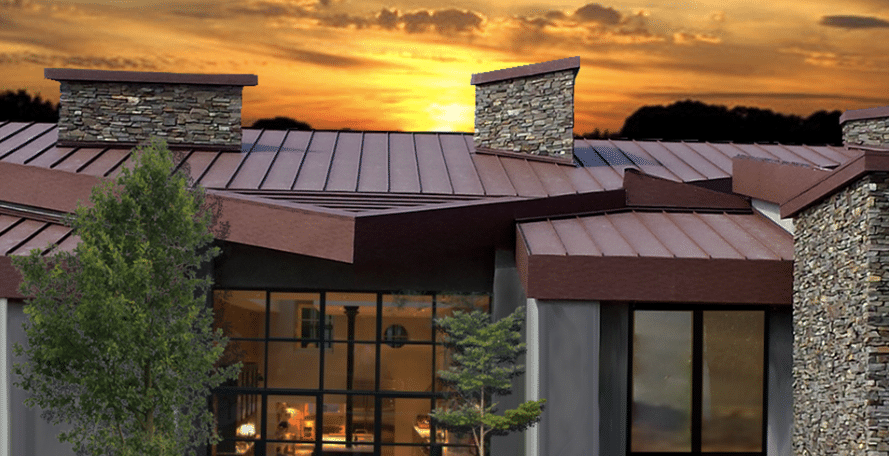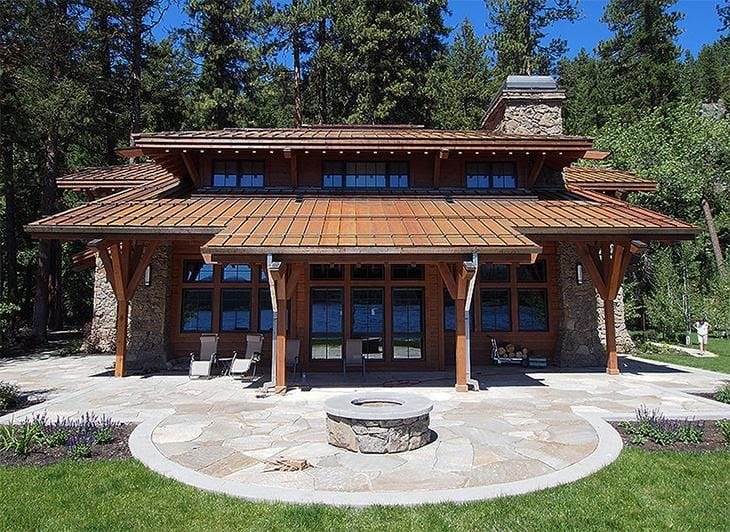Why Do Metal Roofs Leak? A Guide To Weathertightness For Metal Panels
Metal | Metal Siding | roof
The biggest headaches when it comes to homeownership are the unexpected, and often expensive, unfortunate surprises. Imagine you've just spent a boatload of money on a house and you come home to see drips coming down from your ceiling. This is clear-cut evidence of a leak that must be immediately repaired before it gets worse.
As manufacturers of metal panels for roofing and siding, we at Western States Metal Roofing want your panels to last to their fullest potential. In order for this to become your reality, you must take all the necessary precautions such as installing the proper panels for your home and climate. This helps decrease your chance of leaks.
Why Do Metal Roofs Leak?
A metal roof can last decades, but they are not indestructible. A metal roof can have a leak. The cause can be from a variety of circumstances including:
- Missing sealant
- Metal roofing screws not installed properly
- Failed flashing
- Heavy snow or rain
- Installing the wrong type of panel for the roof slope
The leak resistance of your roof or siding is directly related to its weathertightness. If you're not familiar with this term- we're going to explain everything you need to know to make sure your home is protected from leaks.
The word weathertight refers to an enclosure, such as a roof, that is sealed to protect the interior from weather elements such as rain, snow, or wind.
Weathertight vs. Watertight
Sometimes you may hear people refer to a roof as being watertight. However, there's a big difference between these two words.
Something that is weathertight withstands water or pressure from one side. Watertight refers to an enclosure that can withstand pressure from both sides.
Since a roof is designed to protect water from getting inside, and not the other way around, it is technically weathertight and not watertight.
Why Is Weathertightness Important?
How well your roof system or wall panel protects your home from water is critical. If weathertightness is poor, leaking and water damage will result. This can lead to having to replace your metal panel prematurely, mold, rot, and other expensive problems that will have to be fixed.
The more your roof or siding is exposed to water, the higher risk you run of water penetration, or leaks. Below are a few different factors to keep in mind if you live in an area with a high volume of rain.
 Image: Low Slope Standing Seam Roof
Image: Low Slope Standing Seam RoofWeathertightness And Roof Slope
When it comes to metal roofing, the slope of your roof aids in water drainage as it helps water runoff the surface and not accumulate. When water sits on a roof for a long period of time, it increases the likelihood of water penetrating your roof through any screws that are used to attach your roof or from trim that's installed incorrectly.
It’s best to choose the right panel profile for your roof slope:
- For a Mechanically fastened standing seam panel you'll want a roof with a minimum 1:12 Pitch.
- For ⅞" Corrugated, R Panel/PBR Panels, and Clip System standing seam panels you'll want a roof with a minimum 3:12 Pitch
Weathertightness And Panel Profile
Metal panels fall into one of two categories: exposed fastening system and concealed fastening system.
Exposed fastening systems are more susceptible to leaks because of the tiny gaps created between the sealing washer of the fastener and the metal panel. These gaps occur if the screws are installed incorrectly or have loosened over time.
Concealed fastening systems are more weathertight since the fasteners are concealed and not exposed to the elements.
The most weathertightness for metal roofing is a mechanically fastened standing seam. Besides being a concealed fastening system, the panels of a standing seam metal roof can be double locked, which is a process that makes the seal of the panels extra secure.
Weathertightness Warranty
What Is A Weathertightness Warranty?
A weathertight warranty is a guarantee from both the manufacturer and the installer that the metal roof that's installed will remain weathertight for the duration of the warranty. Weathertightness is not covered by the standard limited warranty that most metal roofs come with.
Can I Get A Weathertight Warranty?
Weathertight warranties are not available for most residential roofing projects.
On a large commercial job a weathertight warranty can be purchased, through most manufacturers of a standing seam roof, for an additional charge. These warranties generally range from 5-35 years in length. Warranties are not available for exposed fastener panels.
Weathertightness and Roof Installation Errors
We've often seen roofs fail prematurely because of simple mistakes made during installation that affect the roof's weathertightness.
Errors such as over-driving or under-driving fasteners, attaching flashing incorrectly or using the wrong sealant leaves your roof vulnerable to moisture penetrating through resulting in a leak.
The worst part is that these mistakes are very avoidable. This is why choosing the right contractor is so important. We highly recommend hiring a licensed professional with experience in metal roofing specifically.
How Does Weathertightness Affect The Longevity Of My Metal Panels?
When the right metal material is installed correctly on your home, you have a low maintenance roof or siding that will last you 40-60 plus years. The long lifespan of metal has made it become so popular in residential construction in recent years.
Weathertightness is one factor that people look at to choose their metal panels, but there are other considerations to make when deciding which is right for your roof panel or wall system. To learn more about which metal panel you should choose, we recommend reading:
What Is The Best Type Of Metal Roof For Me?
Metal Panels With Most Leak Resistance
If you are looking for a metal panel with maximum weathertightness, you want to look into a mechanically seamed standing seam roof. The panels are double locked for an extra secure fit that prevents water from seeping in.
Continue on to discover more about Mechanically Seamed Metal Roofing.





